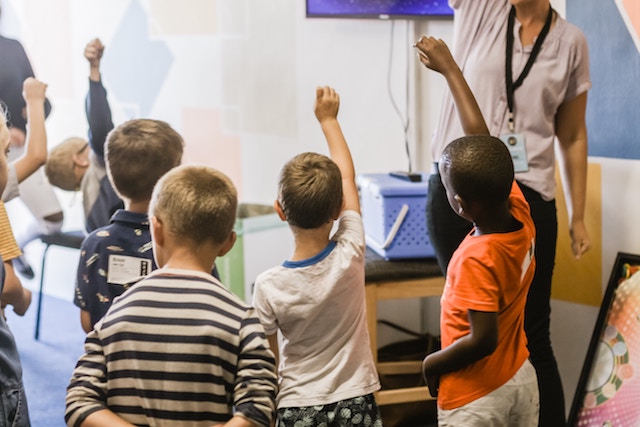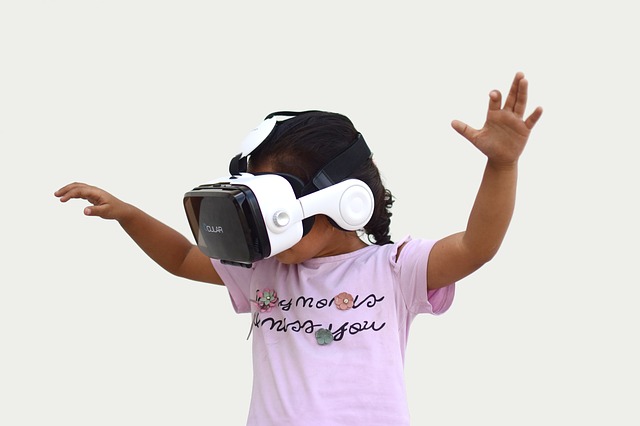This week we are lucky to have guest writer, Dakota Murphey, sharing her wisdom on innovation in education. She takes us beyond the buzzword and into practical ways to innovate in the classroom. Enjoy this informative read, we sure did!

It may sound like a cliché, but kids really are our future, so it’s imperative that they are properly educated.
Cast your mind back to when you were at school – what made you decide to tune in or out of a lesson? I know for me personally, I learnt best when I was challenged – either with a quiz or an interactive game.
Why innovation is important
Due to the rise of technology and the internet, my schooldays of paper-based learning are fast becoming replaced by, or utilised alongside, a wide range of more innovative methods – and that’s a great thing! The world is changing, and we are all moving forward as a society, whether we like it or not. It is therefore vital for education to follow suit.
The rise of technology
In order to educate, you need to innovate. But, in order to innovate, you need to be educated; only with an innovative mindset will you be able to enact the changes that enhance learning in your classroom.
Those changes all need to stem from the technological advances of recent times. While many teachers may think that smartphones and tablets are devil devices, negatively affecting their students’ health, interactivity and wellbeing, used in the right way they can actually be incredibly beneficial. In fact, a medical school in California recently found that using tablets in their teaching improved grade scores by 23 percent.
Since the world has become more and more embedded with technology, using its developments as innovative techniques in the classroom can help build technology-based skills and enable students to learn how to use devices and software correctly. This was proved back in 2014 when Ofcom’s annual report found that the average six-year-old child actually understands more about digital technology than a 45-year-old adult does!
Ideas for becoming more innovative
 Every student has their own way of learning but, with most UK schools known for being underfunded and limited in terms of equipment and supplies, old-fashioned techniques make it difficult to have anything but an all-or-nothing teaching approach. Now, thanks to technology, each student’s learning can be more individualized, implementing teaching techniques specific to their way of learning.
Every student has their own way of learning but, with most UK schools known for being underfunded and limited in terms of equipment and supplies, old-fashioned techniques make it difficult to have anything but an all-or-nothing teaching approach. Now, thanks to technology, each student’s learning can be more individualized, implementing teaching techniques specific to their way of learning.
Other forms of technology software, such as audience response systems (ARS), can also be incredibly useful. These systems not only keep classes engaged and eager to learn, but can also be helpful in monitoring a classes’ current knowledge level. This, in turn, allows teachers to shape lesson plans around any identified knowledge gaps and set relevant homework.
Here are some other innovative ways that technological advances are being implemented in schools:
- Classroom Robots. An exciting form of technology that has recently been successfully tried out in South Korea, robot teachers are said to have made lessons more interesting and entertaining for students. Plus, since they are connected to the internet, they enable teachers from anywhere in the world to be ‘present’ in the classroom.
- Assistive technology. Using assistive technology in the classroom can be an absolute godsend for students with special needs. Phonetic spelling software, for example, can allow dyslexic students to convert words they’re unsure how to spell into the correct spelling, getting across exactly what they intended to say.

Innovative teaching techniques to think about
While it may be true that technology can really help somebody’s way of teaching, there are several non-technology-based techniques. Utilising puzzles and games alongside textbooks can each be a highly effective way of keeping pupils engaged and interested.
Teaching outside of the classroom on field trips, role-playing and developing storyboards can be highly effective methods of building enthusiasm and passion. Building on STEM subjects – chemistry, mathematics and the sciences – the topics that will give students foundational skills for later on in life is also a good technique. Implementing methods which help with a student’s career choice, can be a great way of keeping kids engaged.
Talk to students
Students are young, hungry and, when nurtured correctly, incredibly passionate. Talk to them, involve them in the process, and don’t be annoyed or frustrated if a particular technique doesn’t work out.
With this in mind, it’s vital for teachers to keep track of and monitor how successful certain teaching techniques and innovative methods have been.
It may sound like another cliché, but it’s important not to worry about failing. Making mistakes is a part of human nature – it’s how we respond to them that makes the difference. Don’t doubt yourself, and always remember what Albert Einstein once wisely said: “Anyone who has never made a mistake has never tried anything new.”



